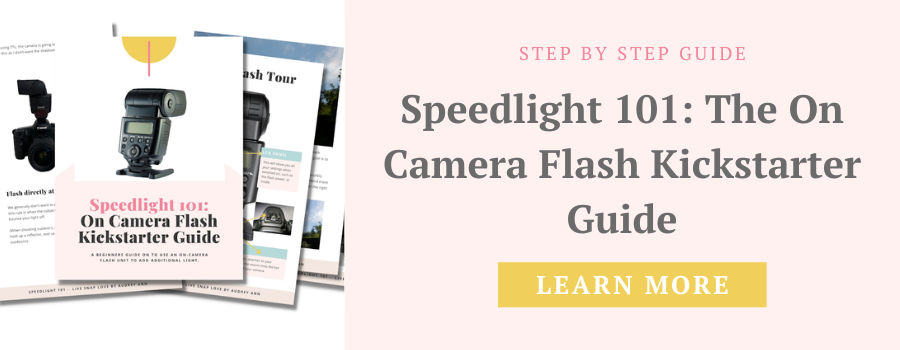A Step by Step Guide to Using a Speedlight
If you’ve been feeling confused about how to use your on-camera flash unit, such as a speedlight, then this post is for you! In it, I’m going to break down the very basics of using flash so you can at least get started with it!
One thing to note is that for this to make any sense whatsoever, you really must understand your exposure triangle and how everything goes together - but for the purposes of this article I'm just going to assume that you are confident about what each of the elements does :)
(Oh, and If you are unsure about why you would even want an external flash unit, i wrote about this recently with some examples here so you can read that first so you have some background!)
With all that caveats neatly out of the way, let's start on how to use flash!
There are three main elements you need to look at when taking an image using flash: the background / ambient light, the amount of flash needed, and where you can bounce the flash off.
It's easier to think of it when you break it down into steps, so that is exactly what I am going to do!
Before we dive in, I do just want to let you know that we have a complete guide to using a speedlight, so if you want to learn more than this post gives you, be sure to check it out:
Step One: Set Camera Exposure for Ambient Light
The strange thing about shooting with flash is that is some ways it is like you are setting two separate exposures - one for the background, and one for your subject. You use your camera settings to expose for how you want the ambient light / background to look (the more ambient light you let in, the less "flashy" your image will look)
The image below has settings of F2.0 / ISO3200 / SS 1/200.
You can see that my subject is still too dark, but I have the ambient light the way I want it, or just a little bit darker (to account for the fact that the flash will brighten it a little)
Step Two: Set the Flash Exposure for Subject
Now, turn your flash unit on. We are now going to expose for our subject using flash. If you are new to flash, I think you will be best starting with TTL. Basically, it's a bit like AUTO for flash: you are letting the camera / flash decide on how much light to add to the scene.
However, you don’t have to stick with that, as with most on camera flash units you can adjust the flash power which is great for getting the scene to look the way you want it!
So in this example below, I dialed the flash power down to -1 to get a more natural look.
Step Three: Bounce Flash to diffuse light
In order to get a more natural look to your images, it's useful to bounce the flash off something else, rather than pointing it straight at your subject. So have a look around you and see what would be best to bounce your flash from. You can either have it pointing up and slightly behind you, or up and slightly in front of you, or to the side.
Step Four: Test and Adjust!
Once you have your camera settings and flash settings, and bounced your light, take a test shot and see what you need to do.
If the flash is looking strong on your subject, move your flash exposure down. If you are getting shadow behind your subject, try bringing up the ambient light by reducing your shutter speed. In both cases you can also try moving the angle of your flash, bouncing it elsewhere to see if that helps.
Just keep in mind that in some ways you are setting two exposures - one for your subject which is controlled via your flash, and one for your background / ambient light which is controlled via the camera settings, usually by changing your shutter speed.
If you want a complete step by step guide to using flash, then be sure to check out my guide “Speedlight 101” which will show you the basic principles behind using flash, along with step by step guides to using flash to add light to low light scenes, to fill in shadows or as fill light on sunny days. Plus you eevn get a troubleshooting section so you can see exactly how to fix any problems that might arise. Go here to check it out!






